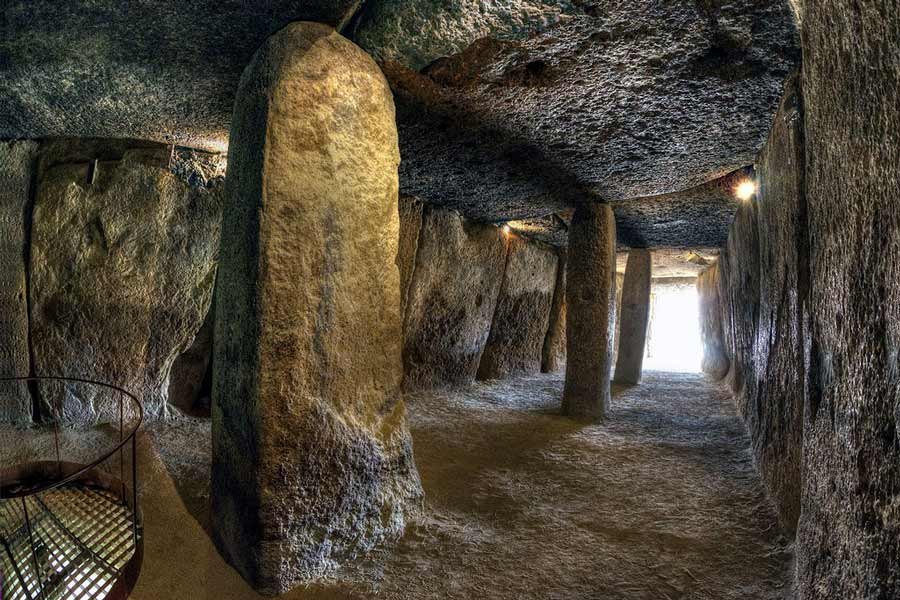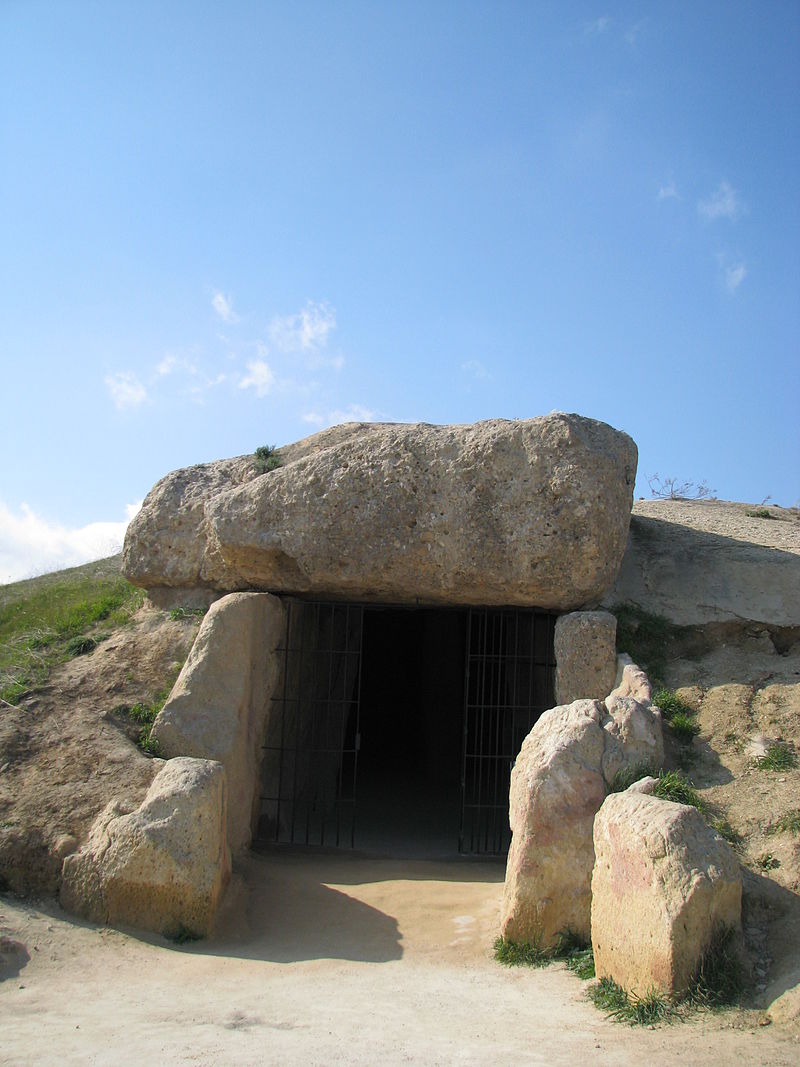This site, declared a UNESCO World Heritage Site in 2016, includes three main megalithic monuments: the Dolmen de Menga, the Dolmen de Viera, and the Tholos de El Romeral. Together, they form one of the most important megalithic complexes in Europe and constitute an exceptional testament to the technical skill and creativity of the Neolithic communities that built them.
History
The Dolmens of Antequera date back to the Neolithic period, between 3500 and 3000 B.C., making them some of the oldest megalithic monuments in Europe. They were built by prehistoric communities inhabiting the region, possibly for religious, funerary, or astronomical purposes. Although the exact purpose of these monuments is unknown, their construction represents a monumental achievement in terms of engineering and social organization.
Architecture
Dolmen de Menga: This dolmen is the largest of the three and is characterized by its large rectangular funerary chamber, built with enormous stone blocks arranged vertically and covered by a horizontal stone slab. The entrance to the dolmen is marked by a corridor leading to the main chamber. It is believed that the Dolmen de Menga was related to funerary rituals and religious ceremonies.
Dolmen de Viera: This dolmen is smaller than Menga but has a similar structure. Its funerary chamber consists of several stone blocks arranged in a horseshoe shape, covered by a horizontal stone slab. Like the Dolmen de Menga, it is believed that the Dolmen de Viera was used for funerary and ceremonial purposes.
Tholos de El Romeral: This monument is unique in its design, as it features a circular structure instead of a rectangular one. Its funerary chamber is formed by a series of stone blocks arranged in a dome shape, with a corridor entrance leading inside. The Tholos de El Romeral is distinguished by its architectural complexity and its uniqueness within the dolmen complex.
Cultural Importance
The Archaeological Complex of Dolmenes de Antequera is an exceptional testament to the cultural heritage of humanity and reflects the technical and creative skills of the Neolithic communities that built them. These monuments symbolize the connection between humans and nature, as well as the importance of collective memory and cultural tradition in human history.
In addition, the Dolmenes de Antequera are a popular tourist destination in the region of Andalusia, attracting visitors from around the world who come to admire their impressive architecture and learn about their fascinating history. The UNESCO World Heritage designation has helped to increase their visibility and preserve their legacy for future generations.
Conservation and Tourism
The Archaeological Complex of Dolmenes de Antequera is protected and preserved by local and national authorities, who work to ensure its preservation and public access. Visitors can explore the monuments, visit interpretation centers, and participate in guided tours to learn more about their history and cultural significance.





















